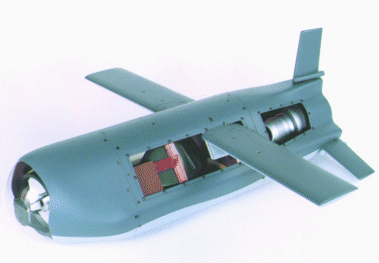
Graham Warwick/WASHINGTON DC
Weapons a fraction of the size of today's munitions are being considered by the US Air Force to increase the firepower of the planned Joint Strike Fighter (JSF) and smaller unmanned combat air vehicles (UCAVs) that might follow.
Internal weapons carriage, when required for stealth, limits the munitions-carrying capability of the JSF and UCAVs. To exploit fully the combat capability of these aircraft, development of a new generation of "miniaturised" munitions is required.
The USAF is pursuing two parallel approaches: a small, highly accurate bomb for use against fixed targets; and an autonomous mini-missile for use against mobile targets. The service plans to merge the two projects, the Small Smart Bomb (SSB) and the Low-Cost Autonomous Attack System (LOCAAS) into a single Miniature Munition Capability programme beginning in 2003.
Boeing has flight tested a 115kg small bomb with differential global-positioning system guidance, and has a contract to demonstrate a potential tripling of the current 19km (12 miles) range. Guided flight tests to demonstrate a terminal seeker are planned for 2001.
Lockheed Martin, meanwhile, has demonstrated an unpowered mini-missile with three LOCAAS test flights, the last of which was in October. The USAF plans to award contracts in December leading to the demonstration of a powered LOCAAS by 2002. Lockheed Martin, Northrop Grumman and Raytheon Systems are the likely bidders.
The LOCAAS uses a laser-radar sensor and automatic target recognition system to detect, classify and prioritise targets, and to select a target and attack mode autonomously.
The missile is intended to be used against three target types: surface-to-surface missile launchers, mobile air defence systems and armoured vehicles.
In the October flight test, the LOCAAS selected a Scud launcher from an array of tank targets. (Previous flights were against tanks only.) With three launchers to choose from, the missile "...selected the one predicted based on the release parameters," says Maj Mark Hunter, the Air Force's LOCAAS programme director.
In an operational weapon, the warhead would be selected automatically to the appropriate explosive mode: aerostable slug against armour; long-rod penetrator, also against armour, but from lower altitude; and fragmentation against soft-skinned vehicles.

LOCAAS RANGE
Hunter says the powered LOCAAS requirement calls for a range of 185km, and the ability to search a 50km2 area at 100km range. Design speed is 200kt and the baseline powerplant is the 50lb-thrust Sundstrand TJ50 turbojet, but Hunter says bidders were free to propose any propulsion system, "...including a propeller."
The powered LOCAAS is designed to be carried internally or packaged four at a time into the Air Force's standard air-dropped tactical munitions dispenser.
Up to two contractors will be selected in December to begin the powered LOCAAS advanced technology demonstration. One will be picked a year later to proceed into testing, with three guided flights planned by 2002. If successful, the powered LOCAAS could be operational by 2007, Hunter believes, at a unit cost of $33,000 in today's prices.
Source: Flight International























